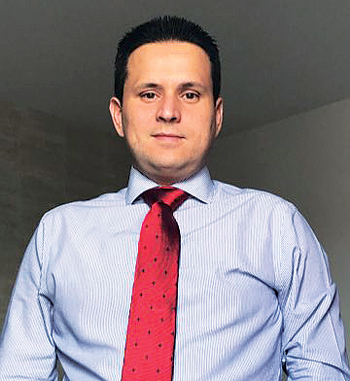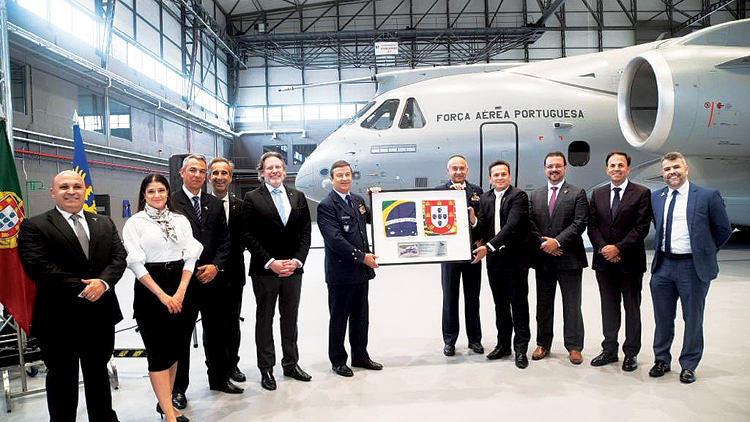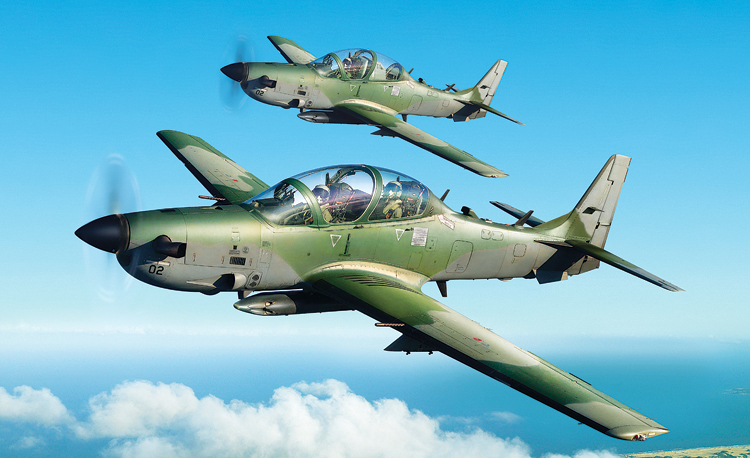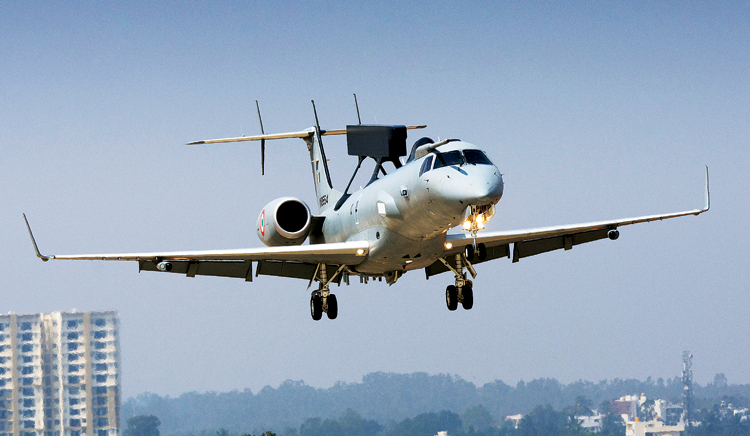INDIAN ARMED FORCES CHIEFS ON OUR RELENTLESS AND FOCUSED PUBLISHING EFFORTS

The insightful articles, inspiring narrations and analytical perspectives presented by the Editorial Team, establish an alluring connect with the reader. My compliments and best wishes to SP Guide Publications.

"Over the past 60 years, the growth of SP Guide Publications has mirrored the rising stature of Indian Navy. Its well-researched and informative magazines on Defence and Aerospace sector have served to shape an educated opinion of our military personnel, policy makers and the public alike. I wish SP's Publication team continued success, fair winds and following seas in all future endeavour!"

Since, its inception in 1964, SP Guide Publications has consistently demonstrated commitment to high-quality journalism in the aerospace and defence sectors, earning a well-deserved reputation as Asia's largest media house in this domain. I wish SP Guide Publications continued success in its pursuit of excellence.
- The layered Air Defence systems that worked superbly, the key element of Operation Sindoor
- Operation Sindoor | Day 2 DGMOs Briefing
- Operation Sindoor: Resolute yet Restrained
- India's Operation Sindoor Sends a Clear Message to Terror and the World – ‘ZERO TOLERANCE’
- Japan and India set forth a defence cooperation consultancy framework, talks on tank and jet engines
EXCLUSIVE
Integrated Solutions & Critical Technologies
Embraer started as a state-project in its beginnings. First experience being the development of aircraft for Brazilian Air Force (FAB), Embraer Defense & Security (EDS) today boasts of its products and solutions in over 60 countries in the world. The newly appointed President & CEO Bosco da Costa Júnior (took over in December, 2022) tells Jayant Baranwal, Editor-in-Chief of SP’s Aviation; in an Exclusive Interview; that the company has shown its dynamic ability to adapt and innovate in the face of changing scenarios in the defence arena and deliver top-notch products and solutions.

On November 11, 2022, Embraer announced the beginning of the transition process of the company’s Defense and Security leadership, appointing Bosco da Costa Júnior as the President and CEO of Embraer Defense & Security.
Jayant Baranwal (JB): Can you take us through the journey of Embraer Defense & Security since its inception and its evolution?
Bosco da Costa Júnior (Bosco): Embraer was created as a project of the Brazilian state, inside the Brazilian Air Force (FAB). Its first experience was developing aircraft for the FAB, which led the company to develop and absorb technologies and then allowed it to spread to other products and business areas.
Its first aircraft was the EMB 110 Bandeirante, which was used for patrol, transport, and parachuting and being so versatile that was also taken into commercial aviation. Later, there were other trainers and light attack aircraft, such as the EMB 312 Tucano and the A-29 Super Tucano. In parallel, in the 1980s and 1990s, Embraer produced in partnership with the Italian Aermacchi, the subsonic fighter AMX to be used in attack, support and aerial reconnaissance.
In the last decades, Embraer Defense has been expanding its solutions to air, land, maritime, space and cyber segments. Embraer offers integrated solutions for Intelligence, Surveillance, Reconnaissance and Monitoring, embedded systems, remote sensing solutions, and other critical defence technologies.
JB: How do you perceive the expansion and evolution of Embraer Defense?
Bosco: Embraer Defense & Security has products and solutions in more than 60 countries and is known worldwide for the quality and excellence of its aircraft and solutions. Beyond that, the company has invested a lot in diversifying its product portfolio, currently offering comprehensive solutions that include systems for air, land, maritime, space, and cyber domains. We also export radars. Embraer has shown its ability to adapt and innovate in the face of changing scenarios in the defence arena and deliver top-notch products and solutions.
JB: What sort of support have you received from your home country?
Bosco: An important point of government incentive is the insertion of new projects, which fosters innovation and the development of new technology which, eventually, will end-up in products that will be exported.

We can cite the Brazilian Air Force’s demand for products such as the A-29 Super Tucano and the C-390 Millennium, both with sales in the international market. Another example is the demand for radars and co-operation in the border monitoring system which was developed with the Brazilian Army, and the Class Tamandaré ships, for the Brazilian Navy.
JB: Which markets in which regions, have been
- the most instrumental and
- contributing most towards the business objectives of Embraer Defense & Security?
Bosco: Embraer Defense & Security has been growing presence in the global market with products and solutions being present in more than 60 countries, and forecasts growth in the segment.
“The C-390 is certified to operate from an altitude of 14,000 ft which fits the operational requirements of the Indian Air Force (IAF) at high altitudes in India’s Northern sector. The KC-390 (refueling version) can easily provide aerial refueling to high-speed fighters/jets due to its much flexible probe-and-drogue system.”
We have been quite active in the Asia Pacific and the Middle East region, promoting our products and solutions. As we look across the region, Embraer’s A-29 Super Tucanos are operated by the air forces in Philippines, Indonesia, and Lebanon. In Thailand, the Army and Navy operate ERJ135s shuttles for VIP transport. We see lots of potential in India and the region for the C-390 Millennium multi-role military transport aircraft. Countries will benefit from the multiple capabilities of the aircraft, its outstanding performance and reliability. In India, Embraer supplied its ERJ 145 platforms for the IAF’s AWACS project (NETRA Airborne Early Warning & Control System), which are currently being operated by the Indian Air Force (IAF). These systems were also deployed during key missions such as the Balakot airstrike. Embraer Legacy 600 jets are also operated by the IAF and Border Security Force for the transportation of government officials and VIPs.

In the Asia-Pacific region, Embraer has signed a contract with Aerodata AG, from Germany, to sell a Praetor 600 to be converted into a Flight Inspection Aircraft, to fulfill a full range of flight inspection missions. After the modification, the aircraft will be delivered and operated by the Ministry of Land, Infrastructure and Transport, Seoul Regional Office of Aviation, Flight Inspection Center in South Korea, which has conducted an international public tender for this acquisition and will be the end-user solution. The fully configured Praetor 600 Flight Inspection Aircraft will be a state-of-the-art platform able to perform a wide array of flight inspection tasks in the modes of site survey, surveillance, commissioning inspection, periodic inspection, any special inspection, procedure validation, and ADS-B airborne checks.
JB: What do you think are the key pillars in the growth of Embraer Defense & Security?
Bosco: We are always assessing the market to offer the best solutions. Embraer develops high technologies that are used throughout its portfolio and bring benefits to all stakeholders. We were able to deliver a high-value-added, cost-effective producer. Our jets are designed for high reliability, high speed, long missions, and aggressive performance, with the highest technology, they offer unbeatable cost-effectiveness. New requirements are continuously updated, as we are always close to the demands of customers and prospective customers. Whatever the mission requirements, there will be an Embraer solution ready for it.
JB: Which all arms have been added off-late as the origin of Embraer was more towards the aerial platforms such as the fixed-wing jets, trainers, and the transporters?
- Can we now say Embraer Defense & Security solutions cover all the areas i.e.
– Land
– Sea
– Air - How strong your cyber-warfare is based on offerings?
Bosco: For air, besides C-390, the A-29 Super Tucano is a multi-role light attack aircraft that can also perform close air support (CAS) to the troops. We do believe that the A-29 Super Tucano can fulfil several needs of air forces around the world, such as border surveillance and training, among many others, and can prove to be a cost-effective solution for the Indian Air Force.
“Embraer Defense has been expanding its solutions to air, land, maritime, space and cyber segments. Embraer offers integrated solutions for Intelligence, Surveillance, Reconnaissance and Monitoring, embedded systems, remote sensing solutions, and other critical defence technologies”
As part of Embraer’s Defence growing strategy, we are also involved in radars development in cooperation with the Brazilian Army. Currently, Embraer is responsible for the Brazilian Army’s Integrated Border Monitoring System (SISFRON), one of the largest border surveillance projects being implemented on the planet, in addition to providing radar and Control and Alert solutions applied to the Army’s Strategic Program Anti-aircraft defence. Embraer offers integrated solutions for Border Surveillance and Monitoring encompassing the complete surveillance cycle, from the collection and transfer of data to its analysis and interpretation, delivering reliable information to support decision makers. In April of 2022, Embraer and the Brazilian army signed an agreement for the SISFRON second phase, expanding the operational scope. On the radar portfolio, Embraer offers equipment such as the SABER M60 radar, which focuses on the search for air targets and integrates into an Anti-Aircraft Operations Center. Embraer also offers the SENTIR M20 radar for ground surveillance and is already in operation in Brazil’s Border Monitoring System (SISFRON).
For Cyber, there is a growing demand for cyber security solutions in the global defence market. Embraer can offer custom solutions, as well as a comprehensive portfolio of integrated systems, radar technologies, and other high-end applications.

In the sea, Embraer Defense & Security, Atech and thyssenkrupp Marine Systems have Águas Azuis, a company created to build four state-of-the-art Tamandaré Class Ships for the Brazilian Navy, with deliveries scheduled between 2025 and 2028. Atech, an Embraer Group company, will be the supplier of the CMS (Combat Management System) and IPMS (Integrated Platform Management System, from L3 MAPPS), and the recipient of technology transfer in cooperation with ATLAS ELEKTRONIK, a thyssenkrupp Marine Systems subsidiary that produces the CMS and sonar systems.
JB: Has Covid-19 played any role in enabling the introduction of any of the new arms?
Bosco: In Brazil, FAB used the KC-390 extensively in operations to transport medical equipment and supplies, from liquid oxygen to vehicles throughout Brazil at the height of the COVID-19 outbreak. The KC-390 Millennium has demonstrated that it can support air forces quickly, respond to a variety of situations not only in military operations but also emergencies and humanitarian aid missions triggered by floods, forest fires, earthquakes, or situations like COVID.
JB: C-390 has become one of flagship programme as it appears. What all are your expectations out of this multirole transport aircraft in terms of
- business returns and
- In terms of imagery of Embraer Defense & Security?
- What are the reactions coming from the air forces opting for this bird including Brazilian Air Force and Hungarian Air Force (if they already inducted)?
Bosco: The C-390 Millennium is a new concept that offers a versatile, multi-mission platform with very low operating costs and fast turnaround, which is an unbeatable combination. The aircraft offers unmatched mobility and cargo capacity, rapid role reconfiguration, high availability, improved comfort, flight safety and proper management of operating costs throughout its life cycle and carries a lot of onboard technology. It is a tactical positioning asset, and very suitable for use in strategic movements.
“Embraer invests about 5 to 6 per cent of its net revenue in research and development (R&D). The company has five research centres in Brazil and one abroad (Netherlands). The company also relies on four thousand employees in this area (including partnerships with universities, incubators, and research institutes).”
The C-390 is certified to operate from an altitude of 14,000 ft which fits the operational requirements of the Indian Air Force (IAF) at high altitudes in India’s Northern sector. The KC-390 (refueling version) can easily provide aerial refueling to highspeed fighters/jets due to its much flexible probe-and-drogue system. KC-390’s versatility due to its unique modern design, makes it best suited for the Indian Air Force which operates from different types of terrains. We have introduced the KC-390 to the Indian Air Force and whenever there is any such requirement from the IAF we will be happy to support them.

The C-390 has already participated in missions in Antarctica, reinforcing the aircraft’s performance in variable climates and conditions, in addition to successfully taking off and landing on unpaved runways, and is confirmed as an aircraft capable of performing in various terrains. It consolidates all Embraer results of all its investments and efforts in R&D and innovation.
“Embraer Defense & Security has products and solutions in more than 60 countries and is known worldwide for the quality and excellence of its aircraft and solutions”
The Portuguese Armed Forces and the Hungarian Defence Force are looking forward to taking advantage of the new aircraft. The Dutch Ministry of Defence highlighted the performance and operational readiness of the aircraft to succeed its current fleet of C-130 Hercules, saying it had conducted rigorous research when comparing the C-390 Millennium and the C-130J, and concluded, “that the C-390 has higher availability and needs considerably less maintenance. This means that more hours can be flown with the same number of aircraft.”
JB: What level of the revenues go into the R&D at Embraer Defense & Security?
Bosco: Embraer invests about 5 to 6 per cent of its net revenue in research and development (R&D). The company has five research centres in Brazil and one abroad (Netherlands). The company also relies on four thousand employees in this area (including partnerships with universities, incubators, and research institutes).
JB: Would you like to share which new programmes and which new innovations Embraer Defense & Security is currently working towards? And the details as possible?
Bosco: As I mentioned in the previous answer, Embraer has more than four thousand employees committed to R&D, and we are focused on adopting and adapting techniques, technology, and materials to deliver sustainable and affordable solutions to meet the world’s aviation, defence, and security challenges. The goal is to decarbonise direct and indirect operations, focusing mainly on reductions in carbon emissions. In this sense, Embraer has some initiatives such as the eVTOL, a 100 per cent electric vertical takeoff and landing vehicle, which is expected to go to market in 2026. Also, Embraer Defense & Security has signed a MoU with BAE Systems to pursue the potential development of a defence variant, with Eve being the platform provider.





